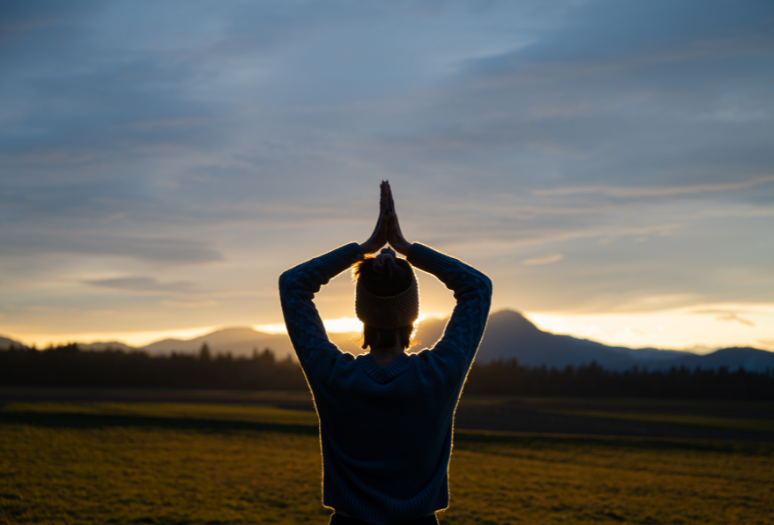When starting out, mindfulness can seem confusing and hard.
We often associate it with seated meditation, imagining long periods of sitting in calm silence (a common misconception).
This can be intimidating. And while meditation can help us be more mindful, it’s not the only way.
There are easy mindfulness exercises for beginners that we can incorporate into our daily lives.
1. Mindful Eating
When we hear “mindful eating,” we may think about healthy, balanced meals, and limited junk food. And while those things are important, mindful eating has nothing to do with nutrition.
It’s the practice of truly experiencing our food with all of our senses. Sometimes, raisins are used for beginners because of their distinct qualities. But we can do it with any food.
For this example, we’ll use an apple. Observe:
- How it looks. Is it shiny? What color is the skin? Does it have spots and imperfections?
- How it feels. Is it smooth? Is the stem rough? How heavy is it? Is it crisp or mushy?
- How it tastes. Is it tart or sweet? What flavors does it have?
- How it smells. Is it woodsy? Floral?
2. Five Sense Exercise
This exercise requires us to observe our senses. It’s commonly used for people who struggle with anxiety, but anyone can benefit from it.
To do the five senses exercise, we can observe:
- Five things we can see.
- Four things we can feel.
- Three things we can hear.
- Two things we can smell.
- One thing we can taste.
Doing this provides an opportunity to notice things we otherwise wouldn’t. And since we only need our senses to do it, we can practice anywhere, anytime.
3. Three Mindful Breathes
Observing the breath is a common part of mindfulness and meditation for beginners and experienced practitioners alike.
- Sit in a comfortable position, either on the floor or in a chair, eyes closed. Notice how the surface feels underneath us.
- Inhale gently and notice how the air feels in the nostrils, lungs, and abdomen. Then, gently exhale, and notice the sensations as the air leaves the body. Repeat three times.
- Reflect on the experience. What was the quality of the air like? Was it challenging? What sensations happened in the body?
4. Mindful Walking
Mindful walking is a form of meditation. It helps us pay attention to the present moment while in motion. To do it, we should:
- Notice how our body feels. Stiff or flexible? Heavy or light? Fatigued or energized?
- Observe our gait, without trying to change it. What’s our pace like? How’s our posture?
- Notice what we see without fixating. Of course, this will vary depending on location. Maybe there are people, cars and skyscrapers, or dirt roads, fields, and an open sky.
- Listen to the sounds. Are there cars honking? Birds chirping? Children laughing?
- Notice smells, good and bad. Certain smells might trigger memories or feelings. We should acknowledge this, and then bring our attention back to the present.
- Observe physical sensations, like how our feet feel with each step, the wind on our face, how our arms swing, etc.
- If we get distracted, we can use our footsteps to recenter ourselves. When we notice our mind has wandered, simply return back to observing the feet, and how the ground feels beneath them.
Summary
Mindfulness can be easy. We can turn our daily activities into mindful moments using the tools we already possess.
With practice, we can learn to be fully present in our lives.

